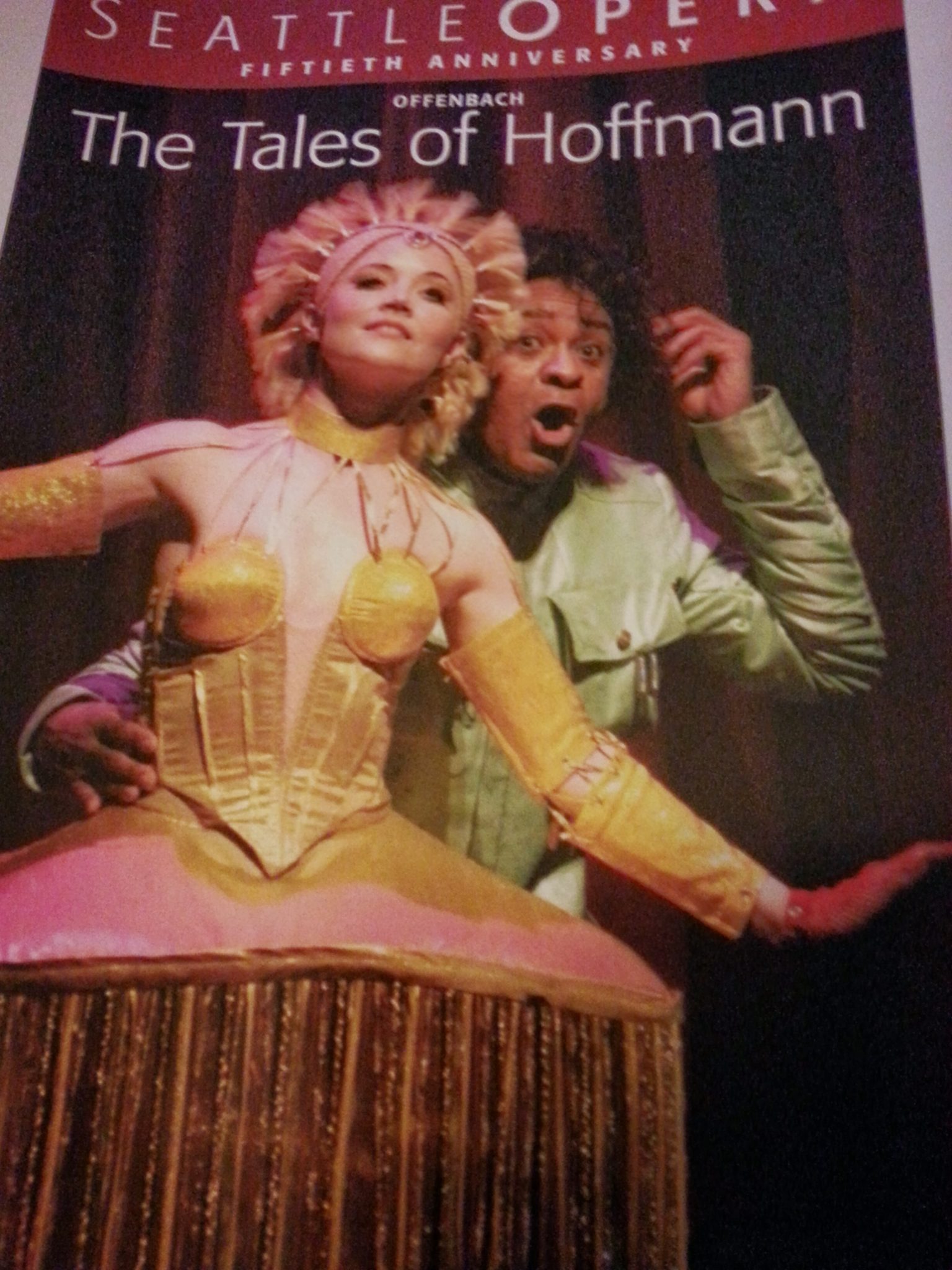 A while back I wrote a post about the erroneous perception that heavy metal has to be grim and angry and depressing. Even a lot of heavy metal fans fall into this way of thinking despite the fact that they have a lot of fun listening to heavy metal. Last weekend, Tales of Hoffmann at Seattle Opera reminded me that opera shares a similar image problem. Heavy metal and opera are both technically challenging styles of music that can seem inaccessible to the uninitiated, but both are actually a lot of fun. In fact, they can be quite silly.
A while back I wrote a post about the erroneous perception that heavy metal has to be grim and angry and depressing. Even a lot of heavy metal fans fall into this way of thinking despite the fact that they have a lot of fun listening to heavy metal. Last weekend, Tales of Hoffmann at Seattle Opera reminded me that opera shares a similar image problem. Heavy metal and opera are both technically challenging styles of music that can seem inaccessible to the uninitiated, but both are actually a lot of fun. In fact, they can be quite silly.
Case in point
Yes, that is our hero performing a campy gag in a politically incorrect song about a dwarf (the opera does date to the late 1870’s). But in the middle of this crude song (starting around 2:15) he is distracted by a memory and sings one of the prettiest pieces of music in the entire opera.
Musical Progression
In general, composer Jacques Offenbach saved the best for last. A lot of operas front-load the best songs, ending with giant boisterous choruses that use the whole cast, but have little else to recommend them. Tales of Hoffmann reverses this, starting out with the obnoxious Kleinzach. The music becomes softer and more beautiful as the opera progresses (perhaps as Hoffmann’s skill as an artist improves?). The most famous piece of music comes in the third act.
The Stories
Based on three short stories by E.T.A. Hoffmann, the opera contains three tales of love lost told by the character Hoffmann to a group of opera fans (whom one character described as “idiots and drunkards”) at the bar during the second act of an opera performed by Hoffmann’s fourth and current love interest. I found the frame more interesting than the individual stories.
There is a weird sort of inconsistency to Les contes d’Hoffmann. Each of the three stories has a completely different mood. The first romance is comical to the point of farce; in a story with heavy nods to Coppelia, Hoffmann falls for a mechanical girl. The second is sweet enough for bel canto; his true love is too ill to sing but does so anyway, and he is blamed for her death. The third is a dark and mystical tragedy; a courtesan steals his reflection and leads him to commit murder.
Enemies and Muses
In every story, Hoffmann is sabotaged by the Enemy. Sometimes Nicolas Cavallier is a character who looks and acts very like Malcolm McDowell in Tank Girl, at others more like Jim Broadbent in Moulin Rouge, but in every case he ensures Hoffmann’s failure.
Hoffmann’s Muse is also with him throughout, disguised as his young friend Nicklausse. Yes, that was me who snorted in the second act when mezzo-soprano Kate Lindsey mimicked the doll’s dance. Lindsey has tremendous comedic chops, and a physicality that is rare in opera. From my seat in the second balcony, I sometimes forgot that Nicklausse was not actually a young man.
[Same singer, different production. I think ours was funnier.]
Big Picture
In the final act, the Muse says Hoffmann’s new love, Stella, is all the women he loved before. After the drunken Hoffmann ruins his chances with Stella and is completely broken, the Muse tells him that his personal disasters will feed his art. Especially since this opera was chosen as the final performance of General Director Speight Jenkin’s 31-year leadership of the company, it is tempting to interpret the story as an allegory of creative endeavor.
Could Stella be what Joss Whedon calls the Big Bad, the final challenge to his Muse? The structure of the opera felt allegorical, but I struggled to fit the pieces together. If each romance is a challenge to art, why is Hoffmann so passive in the final challenge? If the opera is really about the faces of love, then why is becoming a great artist the ending? I almost wonder if librettist Jules Barbier hadn’t figured it out himself yet when Offenbach died. There is something unfinished about the way the three stories were stitched together.
In the booklet, various performers gave varying answers about the meaning of the story and the roles of Hoffmann’s women. Is the doll a representation of the materialism that Hoffmann must overcome to be a great artist? Does she represent a cold and emotionless lover? Or, as my companion suggested, “Maybe it’s just supposed to be funny.”
It was really funny, and I have been known to overthink things.






About the author